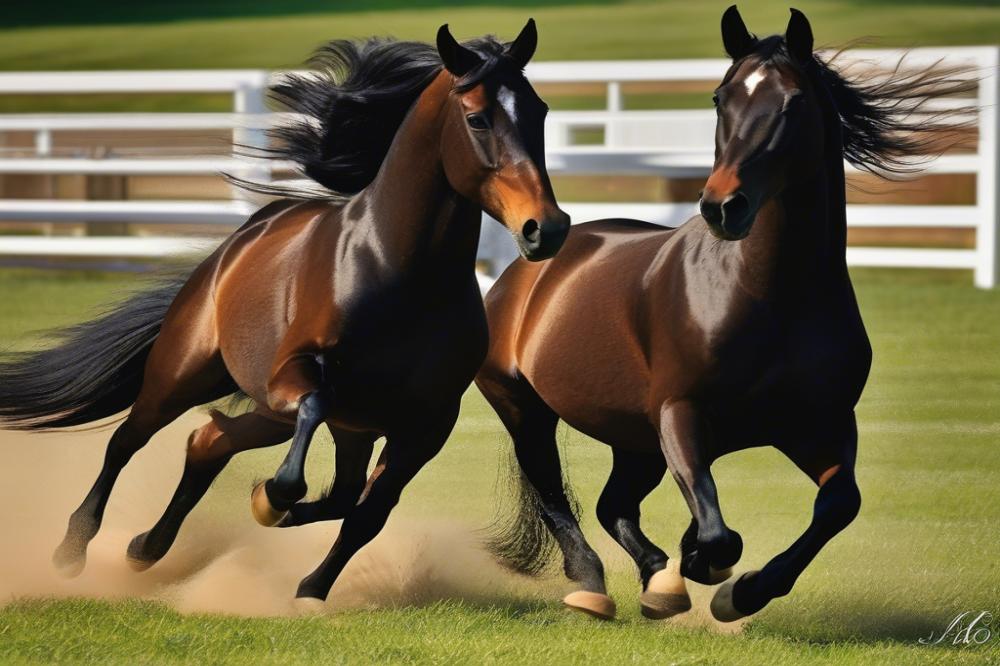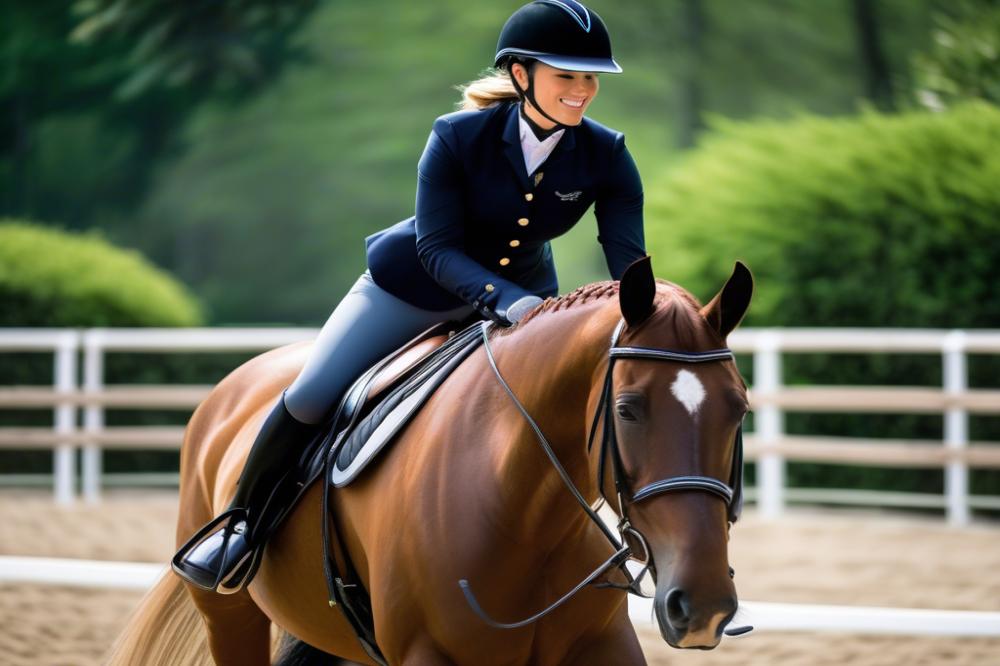Introduction
Morgan horses are a remarkable breed. They are known for their strength, intelligence, and versatility. However, these horses also have a distinct sensitivity that can influence training and riding. Understanding this sensitivity is crucial for any rider or trainer.
Behavioral cues in horses often reflect their emotions and instincts. Each response can reveal a lot about how a horse is feeling. Therefore, recognizing these subtle signs is vital. When a horse is relaxed or anxious, it affects how they respond to riding aids. This adaptation promotes smoother communication between rider and horse.
Adjusting riding aids appropriately can create a more harmonious experience. Well-timed cues enhance the bond between horse and rider. A deeper understanding of a Morgan horse’s behavior can lead to better training outcomes. Consistent and gentle communication is key. Riders should strive to tune into the specific needs of their horse.
As the partnership between horse and rider grows, so does the potential for success. Fostering this connection requires patience and attentiveness. By focusing on riding aids adjustment, one can effectively cultivate trust and respect with their Morgan horse. The journey is not only about control; it’s about building an understanding that benefits both horse and rider.
Understanding Morgan horse sensitivity

Sensitivity levels in horses can vary widely, impacting their response to riding aids. Morgan horses, in particular, are known for their responsive nature. This breed often displays a keen awareness of their rider’s cues. Understanding this sensitivity is essential for effectively riding and training them.
Several factors contribute to a horse’s sensitivity. One primary influence is breed characteristics. Morgans are typically more attuned to the emotions and intentions of their handlers. Past experiences also play a critical role. A horse that has encountered harsh training methods may become wary and less responsive. Conversely, positive experiences can enhance their sensitivity and willingness to engage. Additionally, training methods contribute significantly to how a horse processes signals from their rider. Gentle, clear communication tends to foster a stronger bond.
Building trust is vital when working with any horse, especially with Morgans. Groundwork is often the foundation of this relationship. Through groundwork, riders can develop a mutual understanding. It allows the horse to become acclimated to human interaction beyond simply being ridden. Engaging a Morgan on the ground builds confidence and establishes clear communication. Consequently, when it comes time to ride, the groundwork paves the way for better sensitivity to cues.
Every Morgan horse has its personality, which adds another layer of complexity. Knowledge of individual quirks can help in tailoring training approaches. Understanding these nuances helps in minimizing misunderstandings during rides. Some may require a softer touch, while others respond well to firmer cues. Observing their reactions will guide you in adjusting your methods.
Rider Influence on Sensitivity

The rider plays a crucial role in shaping how a horse behaves and responds. Each interaction can influence the horse’s reactions. Building a bond between rider and horse is essential for effective communication.
Good communication involves more than just commands. Non-verbal cues can greatly enhance understanding. Subtle shifts in posture or breathing can convey messages loud and clear to your Morgan horse. Pay attention to how your horse reacts to your movements. This awareness helps in establishing a connection.
The rider’s posture has a significant impact. Sitting upright projects confidence. Slouching can cause a horse to feel uneasy. Moreover, weight distribution matters. Leaning too far forward can make a horse anxious. Balance is key for maintaining calmness.
Energy levels also affect how a Morgan horse feels while being ridden. High energy can be exciting but may overwhelm the horse. Keeping a calm and steady presence can help to keep sensitivity in check. Remember, every horse is different. Adjusting your energy can lead to improved responsiveness.
Creating comfort for the horse is important. Work on being consistent with your aids. This consistency fosters trust, which is vital. Consider varying your techniques based on the horse’s reactions. Reacting sensitively to changes can strengthen your partnership.
Finally, it’s about patience and practice. Developing this relationship takes time. Approach each ride with an open mind. The goal is collaboration, not control. As trust builds, so will the bond. This process can truly enhance the riding experience.
Bit Selection for Morgan Horses

Selecting the right bit for a Morgan horse requires careful thought. Different bits can greatly influence how a horse responds to the rider. Some bits apply pressure on the horse’s mouth in varying ways, which can either enhance or hinder communication between horse and rider. Understanding these effects is crucial for adjusting riding aids effectively.
Understanding how different bits affect sensitivity and responsiveness
Bits come in many forms, each designed for specific purposes. Snaffle bits, for instance, often offer direct communication without causing too much discomfort. On the other hand, curb bits might apply leverage, which can be uncomfortable if used improperly. It’s vital to be aware that sensitivity may increase with the type of bit chosen. A horse can go from responsive to resistant based simply on the equipment attached to the bridle.
Tips for choosing the right bit based on horse behavior
Observing your Morgan’s behavior is the first step in selecting an appropriate bit. Look for signs of anxiety or discomfort while riding. Horses that toss their heads or move their mouths frequently may need a gentler option. Riders should consider experimenting with a few different bits to gauge how their horse reacts. Pay attention to changes in the horse’s movement and attitude during rides.
Adjusting bit usage to improve communication and comfort
When introducing a new bit, take it slow. Gradually allow the horse to get used to the feel. Start with short rides and monitor how your Morgan accepts the bit. Adjustments can be made based on its reactions. If the horse seems overly tense, consider switching to a softer design. Comfort plays a pivotal role in how well a horse accepts a bit.
Finally, always prioritize your horse’s comfort along with responsiveness. If a certain bit causes your Morgan to behave erratically, it might not be the right one after all. Remember, good communication is at the heart of great riding. Finding the ideal bit is an ongoing process that can evolve with the horse.
Saddle Fit Considerations
Proper saddle fit is vital for managing a horse’s sensitivity. A well-fitted saddle can enhance communication between horse and rider. It allows for better cues and a more responsive ride. When a saddle does not fit properly, issues can arise.
Ill-fitting saddles may cause discomfort or pain. Pressure points can lead to resistance and behavioral problems. Horses often become less cooperative, making riding aids less effective. A saddle that pinches or rubs can also lead to a lack of trust. This results in a frustrating experience for both horse and rider.
To achieve suitable saddle fit, begin by measuring the horse’s back. Knowledge of the horse’s conformation is essential. Next, select a tree size that matches the shape of the horse’s back. Trial saddles can help find the best match. After placing the saddle on the horse, check for adequate clearance along the spine. There should be no pinching or excessive movement when the horse moves.
Riding with the wrong saddle can disrupt sensitivity management. An uncomfortable saddle may hinder the horse’s natural movements. This can lead to a disconnect in the rider-horse relationship. Riders need to pay attention to how the horse responds during ride time. Observing any signs of discomfort, like tail swishing or ear pinning, is crucial.
Regular assessments of saddle fit are recommended. A horse’s body shape can change over time, especially with training and fitness levels. Frequent adjustments may be necessary to maintain proper fit. Keeping the saddle in good condition can also help maximize comfort. Thus, choosing the right saddle will influence sensitivity in a positive way.
Adjusting Riding Aids
Riding aids play a crucial role in communication between rider and horse. For a sensitive Morgan, modifying leg, hand, and seat aids is essential. Start by being aware of how you use your body. Subtle changes can make a big difference in how your horse responds. The goal is to make requests without overwhelming your horse.
Leg aids should be gentle and clear. Use your calf to encourage movement. Avoid using heavy pressure; instead, think about asking your horse with a light touch. If your horse reacts quickly, it might mean your aids are too strong. Always pay attention to the horse’s response. This connection helps build trust.
Understanding Cues
Cues are vital in shaping behavior. A slight movement in your hand can signal a turn or stop. Learn to balance your aids. Using too much pressure can cause confusion. Morgan horses, in particular, thrive on clear signals that are easy to understand. Noticing their reactions can guide you to adjust properly. Make it a habit to observe their ears, eyes, and body language—they often tell you what you need to know.
Clarity and Lightness
Being light and clear with your aids is important. A soft touch will yield better results than harsh commands. Search for that delicate balance between asking and demanding. Your horse needs to feel relaxed to respond correctly. When you maintain lightness in your communication, your horse responds with improved confidence. This dynamic creates a more enjoyable partnership.
Emphasize simplicity in your cues to strengthen your relationship. The easier you make it for your horse to understand, the better the partnership becomes. Every ride is a chance to improve this connection. Always remember that riding is a conversation. Each slight adjustment helps refine that dialogue.
Implementing equine training Strategies
Incorporating effective training methods can significantly help a Morgan horse manage its sensitivity. Understanding how to work with such a responsive horse is essential. Start with clear cues and soft pressure. This approach helps build trust between the rider and the horse.
Consistency plays a major role in the success of any equestrian education. Regular training sessions that follow the same routine will help reinforce desirable behaviors. Horses thrive when they know what to expect. Thus, both the trainer and the horse must display patience throughout the learning process.
Groundwork exercises serve as a foundation for sensitivity awareness and responsiveness. Simple activities such as leading and groundwork circles allow the horse to understand body language. Engaging in lateral movements helps the animal feel more connected. Transitions from walk to trot, even on the ground, can teach the horse how to respond appropriately to the rider’s cues.
Lunging is another effective strategy. This exercise encourages the horse to move freely while still responding to the handler’s signals. Positive reinforcement during these activities builds confidence in the horse. It’s important to celebrate small achievements along the way.
Another useful technique involves desensitizing the horse to sudden movements and noises. Gradually introducing these elements during training can help mitigate unexpected reactions. Creating a calm environment helps the horse focus on the task rather than distractions. Prepare to adapt the training methods as sensitivity levels fluctuate; versatility is key.
Finally, remember that every horse learns at its own pace. Riders should not rush the process, as this can lead to frustration for both parties. Maintaining a supportive atmosphere allows the horse to feel secure. This essential aspect of training fosters a strong bond based on mutual understanding.
Final Thoughts on Adjusting Riding Aids
Recapping the strategies discussed, riders must remember to approach their Morgan horses with a clear understanding of their sensitivity. Starting with light aid signals can prevent overwhelming a horse that may respond sharply. Using a relaxed grip not only makes communication easier but also allows the horse to respond more softly. Moreover, practicing patience while transitioning between aids will go a long way in cultivating trust.
Building a strong bond plays a crucial role in equine training. The relationship between rider and horse is a two-way street, and both need to find a rhythm together. Listening to the horse’s responses will lead to better understanding. Acknowledging the non-verbal cues can significantly enhance this connection. Horses communicate through their body language, and being attentive can help riders adjust their techniques seamlessly.
Ongoing education is vital. Exploring different riding styles or techniques can provide fresh insights. Attending clinics or seminars on horse behavior can enhance one’s skills. It is essential to remain flexible and willing to adapt based on what the horse is communicating. Each training session offers new lessons that can shape not only the rider’s abilities but also the horse’s performance.
In conclusion, working with a Morgan requires careful attention and adaptability. The journey of learning never stops. Taking the time to understand and adjust riding aids thoughtfully can result in a more harmonious experience for both horse and rider. Embrace the learning process and enjoy the ride!



